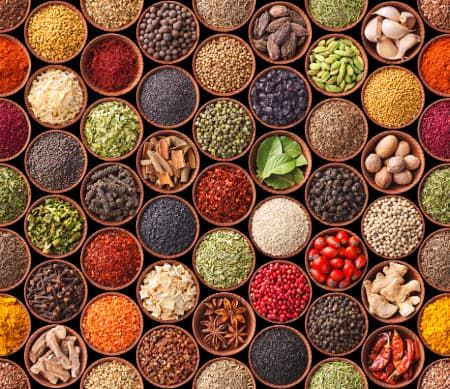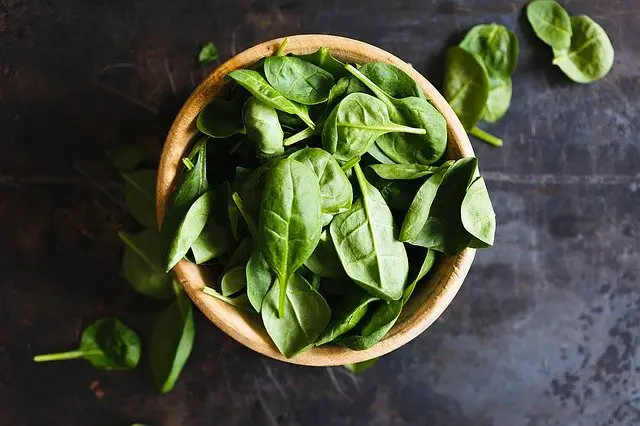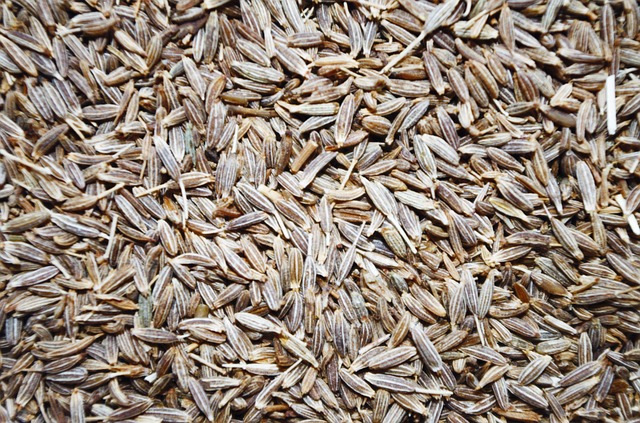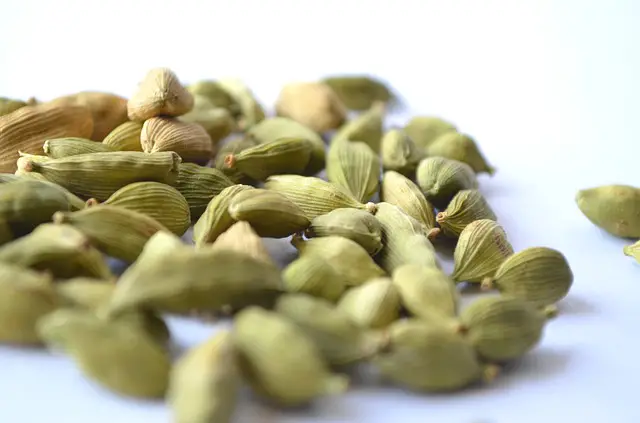Uses of herbs and spices
Jump To:

In the modern age, we opt for pills, lotions, balms, and other products for our health and beauty woes. But did you know your grandmother’s solution of indigenous herbs and spices would work equally well for those ailments and beauty woes, if not better? Ready to know more? Here are some healthy spices and herbs that will help you stay healthy
Turmeric:
Curcumin – A key ingredient of turmeric is a powerful antioxidant. It helps promote the antioxidant enzymes in your body and fights oxidative damage. Since aging and several health ailments are triggered by oxidative damage, you can fight them with turmeric in your curries and dals.
Since this spice has anti-inflammatory properties, it can soothe disorders and diseases caused by excessive inflammation like those of the digestive system (stomach pain, bloating, intestinal gas), arthritis, etc.
If you are prone to cough and cold, having some raw turmeric with warm milk will boost your immunity. For glowing skin or to fight acne and pimples, a turmeric face mask can be pretty effective.
Cayenne Pepper:
Cayenne pepper, a type of spice, from the family, Capsicum, is no exception to the same. People use Cayenne pepper, a considerably hot chili pepper, in the preparation of spicy dishes, either in its whole form/ powdered form for centuries in America & China valuing its benefits. A large number of prominent societies tapped into the health benefits of Cayenne Pepper. And still, continue to opt for it after they came to know about one for its ample healthier advantages. Check out more cayenne pepper benefits.
Basil:

Though you may consider it an inconspicuous herb, basil has antibacterial properties which makes it a potent solution to inhibit the growth of yeasts, bacteria, and molds. It can also help calm inflammation together with boosting your immune system and cardiovascular health. By chewing on basil leaves, you can prevent infections and even get relief from cough and cold.
Cumin:

Used in curries, dals, and other food either in its fried or roasted avatar, cumin not only gives a distinct taste to the recipe but also brings several health benefits your way. While its elements like cumin aldehyde and thymol aid in digestion, this spice also offers relief from gas troubles. Cumin is found to offer effective results for those with insomnia, asthma, common cold, bronchitis, and other respiratory disorders, boils, and skin disorders.
Mint:

It gets its characteristic aroma and flavor from its key element – Menthol. You can use mint leaves at any stage of your cooking, right from the beginning in appetizers to the main course and till dessert and beverages. Apart from helping you combat bad breath, mint helps to soothe and cure stomach aches. If you suffer from irregular bowel syndrome, drinking min tea would offer relief by getting your body rid of the toxins responsible for it.
Cardamom:

Used as a whole or crushed in many Indian recipes and even tea, this spice brings several benefits your way. Ideally, you should crush it to expose the minuscule pods inside to get the optimal benefit of this spice. From treating bad breath to giving relief from many digestive problems such as gas, bloating, loss of appetite, and heartburn, cardamom is like a magical pill that your kitchen must have.
Parsley:

Though used mostly in garnishing rather than flavoring, this herb is an excellent mouth freshener, which can help you avoid embarrassment after you have had onion or garlic. Being a good source of vitamins C and A, parsley gives your immunity a boost to help you steer clear of common colds and infections. It also helps in digestion and in improving delayed menstrual cycles.
Clove:
Clove is a spice derived from the dried flower buds of the clove tree.
- Clove oil acts as a painkiller when applied topically.
- Helps with stomach issues like gas, diarrhea, nausea, and upset stomach.
- It also contains compounds that help with blood circulation and can stimulate the skin when applied directly to it, making it indispensable to acne patients.
Black Pepper:
Black pepper, also known as peppercorn is made from the dried fruit of a flowering vine, native to South India. For centuries, it has been used to facilitate digestion and soothe upset stomachs.
A quarter teaspoon of black pepper powder mixed with thin buttermilk should be consumed in cases of indigestion or heaviness in the stomach to alleviate discomfort.
Ginger:
Ginger is a plant whose roots are used as an additive in many cuisines for its pungent flavor.
It helps in relieving the common cold as well as the effects of:
- heartburn
- nausea
- upset stomach
- diarrhea
- motion and morning sickness.
It is a natural remedy for headaches, minor body aches, and even certain cases of arthritis.
Ginger is also believed to have anti-carcinogenic properties, making it effective in preventing cancer.
Saffron:
Saffron is obtained from the flower of the saffron crocus and is the world’s most expensive spice by weight.
It is used in the treatment of:
- kidney
- bladder
- liver disorders
- improves blood circulation to the organs during digestion.
It is documented to lower blood cholesterol and triglycerides among heart patients and has several cosmetic applications due to its ability to lighten one’s skin tone.
Garlic:
Garlic with its antiviral and antibacterial properties helps in boosting immunity and keeps one looking fresh and healthy.
Garlic’s ability to fight infections and bacteria makes it an effective cure for warts and skin problems.
Garlic’s antibacterial and anesthetizing properties can help cure toothaches.
What are the main uses of herbs?
Culinary herbs are herbaceous plants that are used to add flavour and colour to all types of meals. Herbs have been used for thousands of years to add flavour to meals, as medicine and as a preservative.
What are the most used herbs and spices?
Use this checklist of the most essential herbs and spices to have in your pantry. Salt. Black Pepper. Cinnamon. Basil. Parsley. Thyme. Rosemary. Cumin.
What is the purpose of using spices?
Why are spices used? The obvious answer is that they enhance food flavor, color, and palatability.
What are the three uses of spices?
Historically, spices have been used in perfumes, aromatherapy, natural remedies, embalming and even weapons (think pepper spray). Generally speaking, spices are harvested from plants that grow in tropical regions, whereas what we commonly call “herbs” tend to hail from temperate zones.
What is the difference between herbs and spices?
Herbs and Spices come from different parts of the plant An herb is the green, leafy part of the plant. Examples are basil, rosemary, sage, thyme, parsley, and oregano. A spice can come from the root, stem, seed, fruit, flower or bark of the tree or plant.
What is the most used herb?
Basil – Basil is the most commonly used herb in the United States. Peppery with a mild anise flavor, Italian basil is relatively sweeter than its purple counterpart.
What are 20 herbs spices?
Essential Herbs and Spices Thyme. Basil. Oregano. Rosemary. Fennel Seed. Bay Leaves. Chili Powder. Smoked Paprika.
What are the 15 herbs and spices?
Top Herbs and Spices for Your Kitchen: Coarse Unrefined Sea Salt. Black peppercorns and grinder- fresh pepper is a must when finishing a dish. Rosemary. The 3 C’s: Cumin, Chili powder, Cayenne. Smoked Paprika- smell it and thank me later. Oregano. Garlic. Red chili pepper flakes. More items…
What are 3 common herbs or spices?
Herbs and spices for a well-stocked spice drawer
- Black peppercorns. Pepper is a spice that’s familiar to everyone.
- Ground cinnamon. A warm spice packed with antioxidants, cinnamon adds a touch of sweetness to dishes.
- Chili powder.
- Hot-red-chili flakes.
- Cumin.
- Ground ginger.
- Nutmeg.
- Smoked paprika.
What is the best herb for health?
Healthiest herbs and spices and their health benefits Turmeric. Ginger. Cumin. Peppermint. Echinacea. Cinnamon. Chili powder. Parsley.
What are herbs give five examples?
Herbs are those plants whose stems are soft green and perishable. They have a very short life span of one or two seasons. Herbs are Wheat, Paddy (Rice), Cabbage, Tomato, Mustard, Radish, Sunflower, Carrot, Ginger, and Turnip.
What is the importance of spices in human nutrition?
Spices occur in a variety of flavor, color, and aroma contributing a wide range of nutrients to foods (Mann, 2011). They enhance and complement flavor in foods with no detrimental effect on the organoleptic quality of the food (Kaefer and Milner, 2011).
What are spices used in food?
Here are some common cooking spices you can find in many kitchens Allspice. Anise. Cardamom. Chinese five spice. Cinnamon. Cloves. Coriander. Cumin.
